Admittedly, I did not get great photos of the flowers, because they were all turning into BEANS!!!!!
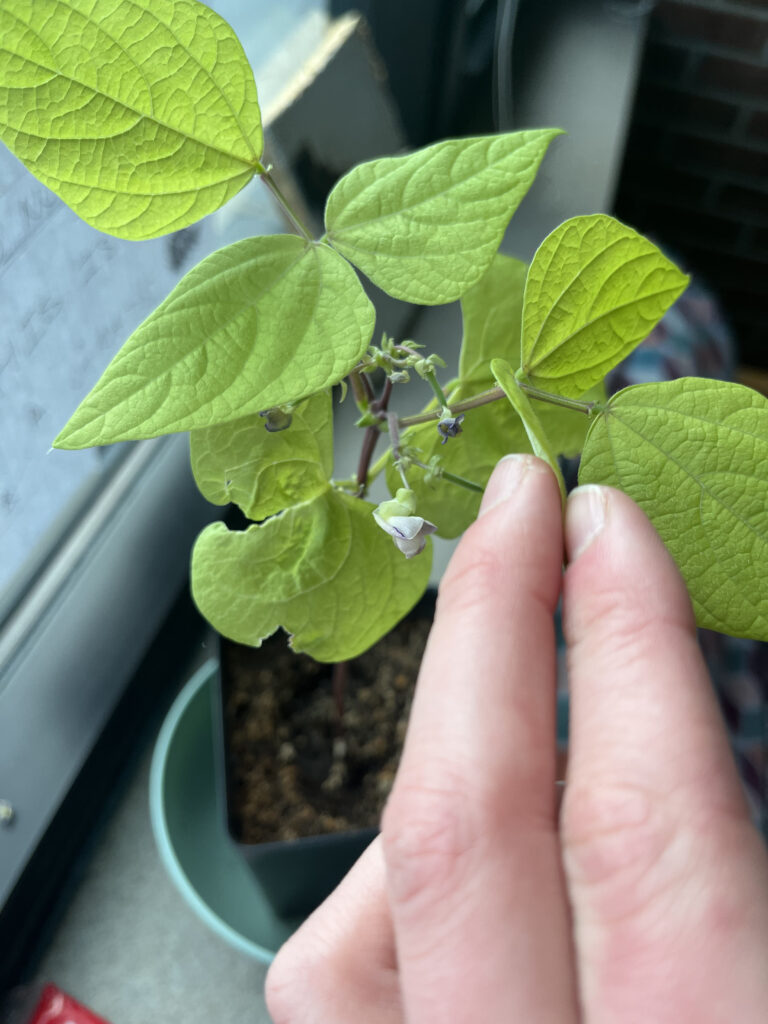
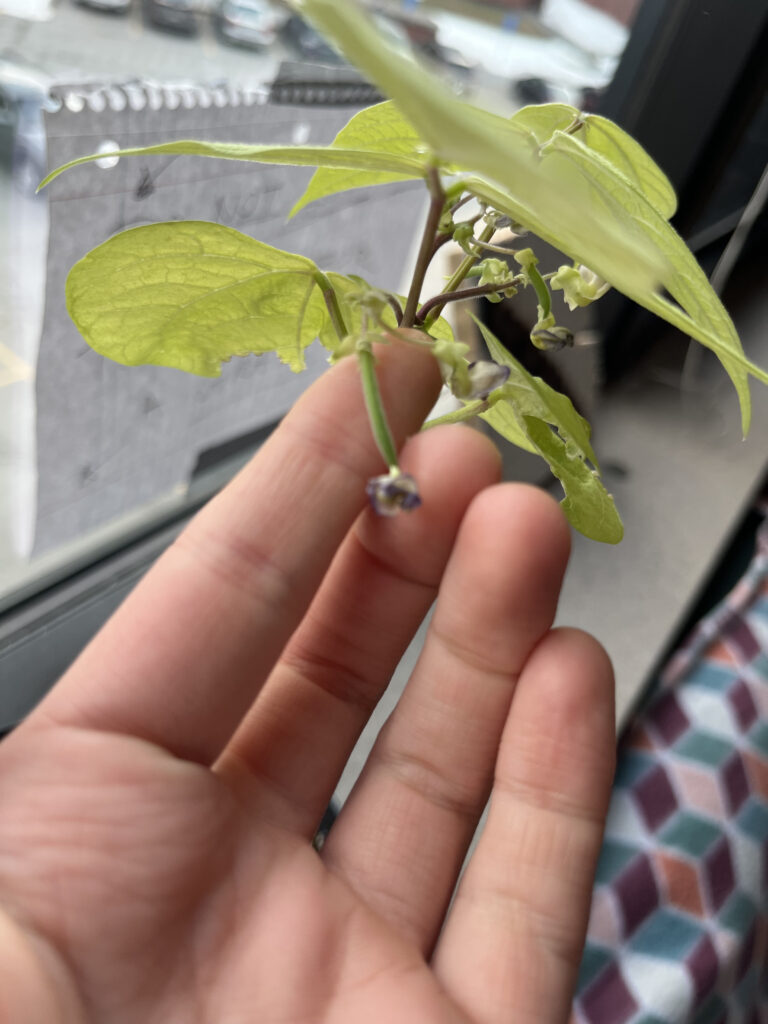
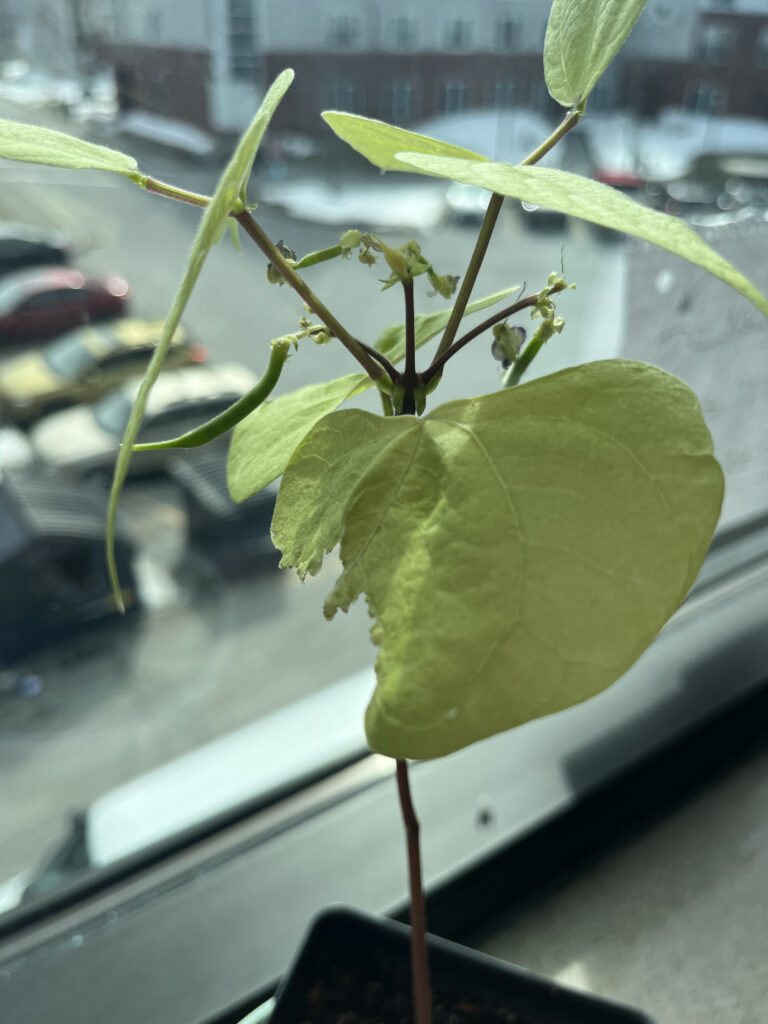
LOOK AT THIS THING! IT’S PERFECT!
Somehow, in my dorm room, this thing managed to pollinate AND fertilize and begin to produce a fruit! WHAT?!
A bean pod is an example of a legume. Its a dehiscent fruit: one that splits open. Makes sense: on examination the pod has a seam lengthwise where it would split open, releasing the seeds.
Right now, the bean pod is super fleshy and green. But if left on the plant the fruit and the seeds dry up before splitting naturally.
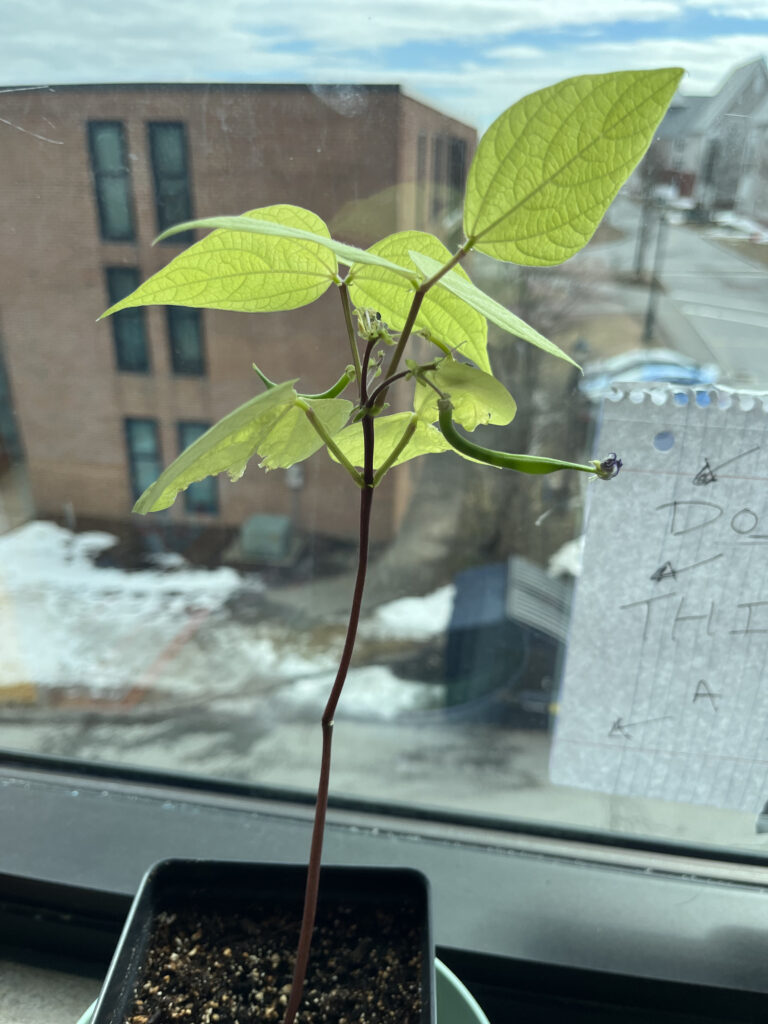
The bean flower grows to attract pollinators and is the site of fertilization. Flowers create male and female gametes (eggs and sperms). The eggs are in the ovule, surrounded by the ovary. Two sperm enter the ovule. One of the sperm merges with the egg to create a seed. One merges with a polar nuclei to become endosperm, which is a food source for the seed. The ovary then develops into our fruit.
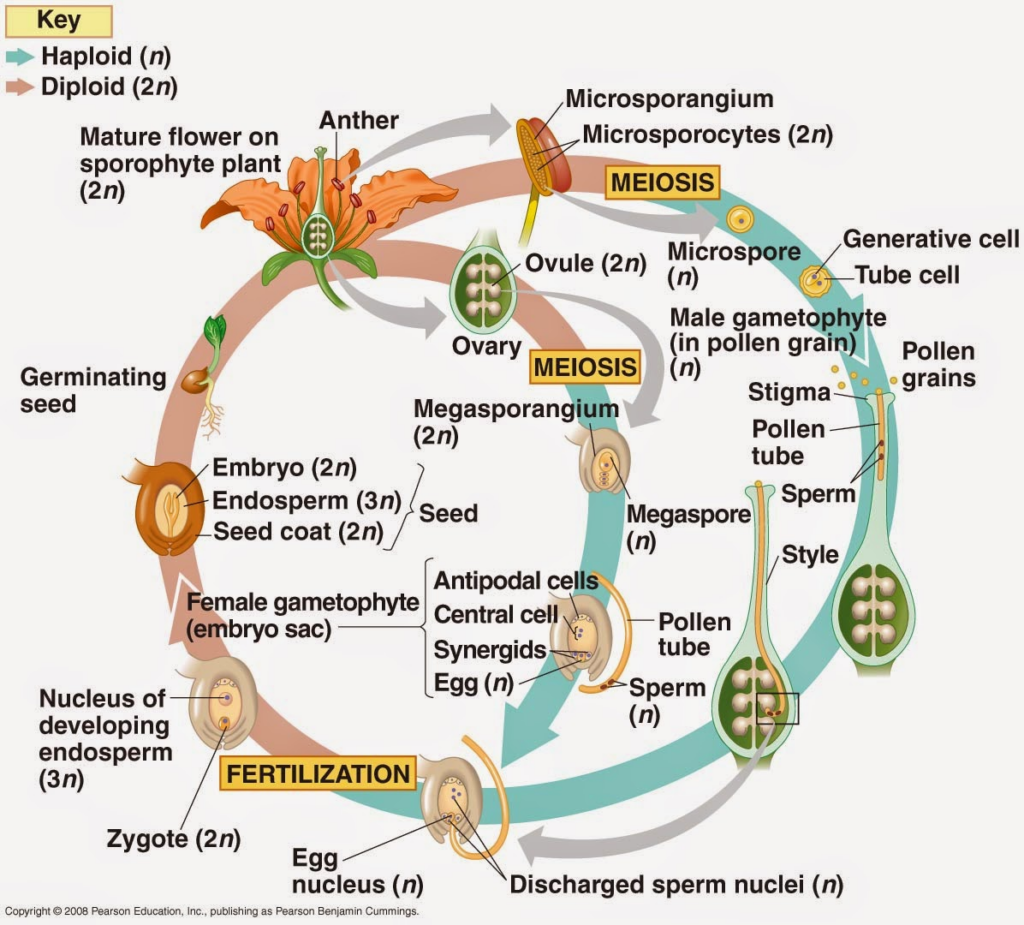
The two types of generations in a plant is the gametophyte and sporophyte generations. The part we physically see in angiosperms is the sporophyte generation: multicellular and diploid (two sets of DNA, 1/2 from each parent.) The other part of the generation is the gametophytes. We do not see the gametophytes: they are the microspore and megaspore. They are haploid and typically single celled (1 sets of DNA). The gametes, known as the sperm and egg are what combine to make a baby plant.